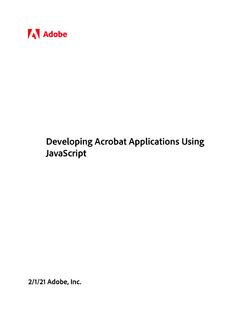Transcription of 5 Cropping Systems - Crop Sciences Department
1 Cropping Systems 49 Thousand acresYear2010195019601970198019902000020 00600010000400080001200014000 CornSoybeanWheatOatsHayTwo crops corn and soybeans have come to domi-nate the cultivated area of Illinois over the past 60 years, moving from 60% of cropped acres in 1950 to more than 90% in recent years (Figure ). Wheat acreage de-clined by about half during this period, to about 1 million acres, while the number of acres used to produce livestock feed oats and hay has declined by almost 90%, down to less than 750 thousand acres.
2 These shifts were due largely to the reduction in livestock numbers in Illinois. Much of the corn and soybeans produced in Illinois is exported to other states and to other acreage reached current levels during the 1970s, and though corn acreage has remained slightly higher than soybean acreage, most fields in Illinois have been managed as a 2-year corn soybean rotation. In the past few years, corn acreage has increased at the expense of soybean acreage, and as a result there is more corn following corn in Illinois. Although there is little evidence to suggest that the 2-year rotation common in Illinois is less stable than Cropping Systems common elsewhere, some producers are interested in trying alternatives in an attempt to spread risks and to learn about other possible uses of the land they farm.
3 So far, few alternatives have proven themselves to be economically viable, at least on large System DefinitionsThe term Cropping system refers to the crops and crop sequences and the management techniques used on a par-ticular field over a period of years. This term is not a new one, but it has been used more often in recent years in dis-cussions about sustainability of our agricultural production Systems . Several other terms have also been used during these discussions:l Allelopathy is the release of a chemical substance by one plant species that inhibits the growth of another species.
4 It has been proven or is suspected to cause yield reductions when one crop follows another of the same family for example, when corn follows wheat. Techni-cally, damage to a crop from following itself (such as corn following corn) is referred to as autotoxicity. In many cases the actual cause of such yield reduction is not well understood, but it is generally thought that the breakdown of crop residue can release chemicals that inhibit the growth of the next crop. So keeping old-crop residue away from new-crop roots and seedlings should help to minimize such Double- Cropping (also known as sequential Cropping ) is the practice of planting a second crop immediately following the harvest of a first crop, thus harvesting two crops from the same field in one year.
5 This is a case of multiple Cropping , which requires a season long enough and crops that mature quickly enough to allow two harvests in one Intercropping is the presence of two or more crops in the same field at the same time, planted in an ar-5 Cropping SystemsEmerson NafzigerDepartment of Crop Crop acreage in Illinois, 1950 through 2007. Source: National Agricultural Statistics Illinois Agronomy HandbookYield advantage of SC over CC (bu/A) 4004080 202060100rangement that results in the crops competing with one Monocropping, or monoculture, refers to the presence of a single crop in a field.
6 This term is often used to refer to growing the same crop year after year in the same field; this practice is better described as continuous Cropping , or continuous Relay intercropping is a technique in which different crops are planted at different times in the same field, and both (or all) crops spend at least part of their season grow-ing together in the field. An example would be dropping cover-crop seed into a soybean crop before it is Strip Cropping is the presence of two or more crops in the same field, planted in strips such that most plant competition is within each crop rather than between crops.
7 This practice has elements of both intercropping and monocropping, with the width of the strips deter-mining the degree of rotations, as a primary aspect of Cropping Systems , have received considerable attention in recent years, with many people contending that most current rotations are unstable and (at least indirectly) harmful to the environ-ment and therefore not sustainable. Many proponents of sustainable agriculture point to the stability that accom-panied the mixed farming practices of the past, in which livestock played a key role in utilizing crops produced and in returning manure to the fields.
8 Such Systems can still work well, but reduced livestock numbers, fewer produc-ers, and increased crop productivity have meant that such Systems are likely to work well for a relatively small seg-ment of Illinois agriculture. Corn and Soybean in RotationThe corn soybean rotation (with only one year of each crop) is still by far the most common one in Illinois. This crop sequence offers several advantages over growing either crop continuously. These advantages have been affected by the development of glyphosate-tolerant corn and soybean (which has tended to lessen the advantages of rotation with regard to weed control) and by the develop-ment of Bt-rootworm hybrids in corn (which has lessened the disadvantage in cost of control, and possibly in loss of yield, historically tied to rootworm control in continu-ous corn).
9 The rotation with soybean reduces nitrogen fertilizer rate compared to continuous corn, but today the perceived disadvantage for continuous corn is less of an incentive to rotate than it has been in the past. Even with the shifts in management options, most cur-rent data continue to suggest that yields of corn following soybean (SC) tend to be higher than yields of corn fol-lowing corn (CC). Figure shows the yield difference between SC and CC over some 60 trials conducted over the past decade in different Illinois locations.
10 While there is considerable variation over years and environments, CS averaged about 8% more yield than did CC. The four large yield differences in favor of SC on the right side of the figure are from locations where CC did relatively poorly, for reasons that might have included inadequate control of corn rootworm and a particular pattern of dryness. Such yield differences have diminished in the past four years, and it is possible that the use of Bt for rootworm, or of hybrids improved in other ways, will mean much less incidence of such loss.
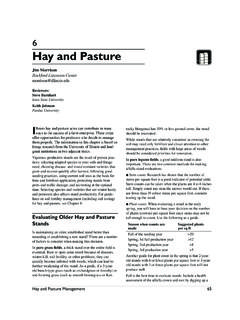
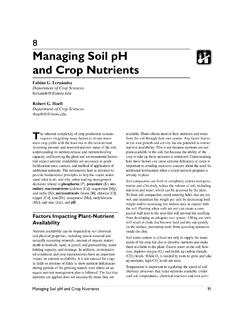
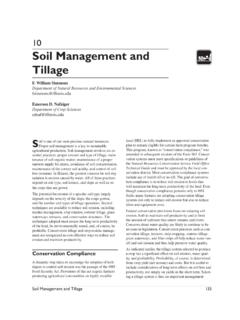
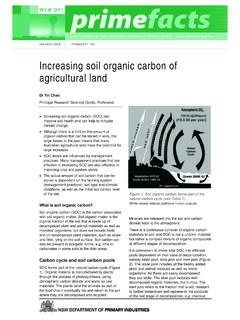


![Class - X Multiple Choice Question Bank [MCQ ] Term I](/cache/preview/6/4/a/a/2/a/b/6/thumb-64aa2ab628ee91ba2326c975fd6b6d6b.jpg)
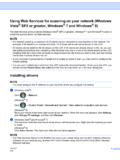
![arXiv:1902.07296v1 [cs.CV] 19 Feb 2019](/cache/no-preview.jpg)

